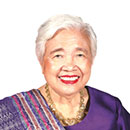"EVERYONE dies, but no one is dead," so goes an ancient Tibetan saying.
Today, we celebrate the second of two holidays which have been integrated not only into religious celebrations but also in our culture, traditions and folk beliefs.
Already have an active account? Log in here.
Continue reading with one of these options:
Continue reading with one of these options:
Premium + Digital Edition
Ad-free access
P 80 per month
(billed annually at P 960)
- Unlimited ad-free access to website articles
- Limited offer: Subscribe today and get digital edition access for free (accessible with up to 3 devices)
TRY FREE FOR 14 DAYS
See details
See details
If you have an active account, log in
here
.


